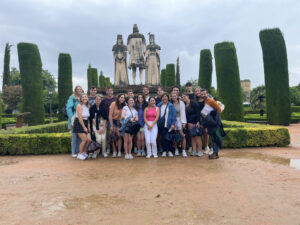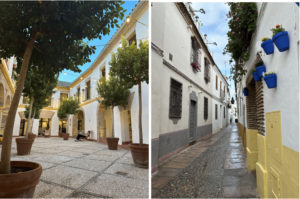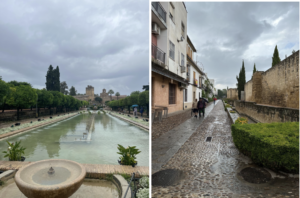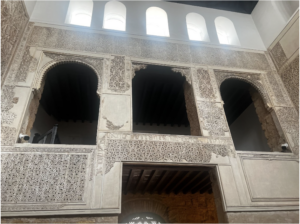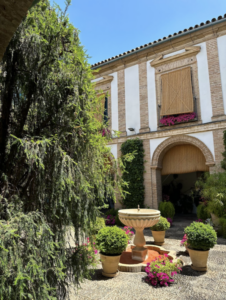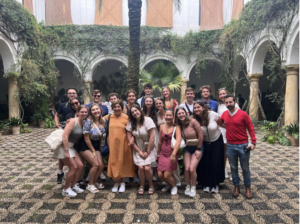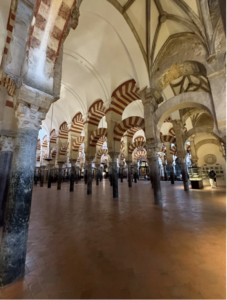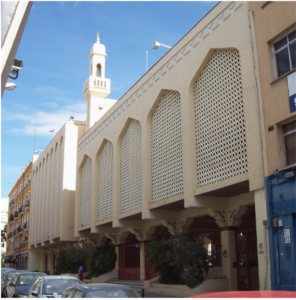Written by: Mikey Mitrokostas (Session 1)
After our week-long tour of Southern Spain, visiting Cordoba, Sevilla, and Granada, by far the most stunning city of them all to me was Sevilla.
The city holds a unique beauty. From its people, culture, architecture, and deep-rooted history, Sevilla gave off a vibe and vibrant energy that was different from any other city we have traveled to so far. My only complaint was that we only got to spend two nights there.
Sevilla is the perfect encapsulation of Spain, and we took full advantage of it. From the moment we dropped our bags off at the hostel, we were off. We started the day off by visiting the Royal Alcazar Gardens. The picturesque city of Sevilla is a seamless mix of Moorish, Christian, and Jewish history, and the Alcazar of Sevilla is the perfect representation of those traditions. The royal palace was one of the most beautiful things I’ve witnessed in Spain so far. The distinct Muslim and Jewish influence on a palace that housed a Christian King is another reminder of the preservation of culture and prioritizing beauty throughout Spanish history.
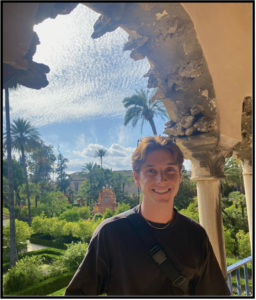
I am a big fan of when we all get the chance to share a meal together, which we had the chance to do on our first night in Sevilla. Maybe it was the good food & drinks, or Profe’s tear-jerking toast, or perhaps it was the fact we got to sit overlooking the beautiful river that runs through Seville, but this meal was one of the most fun and memorable moments we’ve had as a group on the trip so far.
The next morning we woke up early and toured the Archivo de Indias, which as a building has served many purposes over Sevilla’s history but was originally created to centralize the city’s rich trading industry. The tour served as the perfect all-encompassing history of the city’s history.
Afterward, we hurried over to the Cathedral of Seville for mass. This cathedral is an architectural masterpiece, and to be honest, it was hard to focus on the mass while basking in awe of its beauty. (If it wasn’t for our visit to the Mezquita-Cathedral in Cordoba just a couple of days before, I would say it was the most beautiful cathedral I’ve ever seen.) The Cathedral of Sevilla is the world’s largest gothic cathedral and I cannot nearly describe its sheer size through this blog, but hopefully, this picture helps:
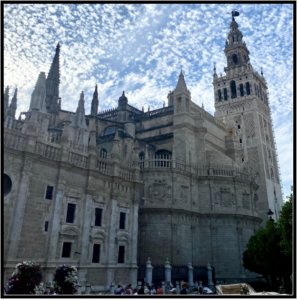
After mass, we got to climb the Giralda tower attached to the cathedral and take in amazing views of Sevilla from over 300 feet up!
Later that day we visited the Plaza de Espana. Profe Juan explained to me that this park-like place and surrounding buildings were created in the early 1900s when Spain hosted an Ibero-American expedition for the world fair. Influenced by the Spanish Renaissance, the Plaza’s large marble columns, colorful patterns, and intricate tower designs serve as a beautiful representation of the country.
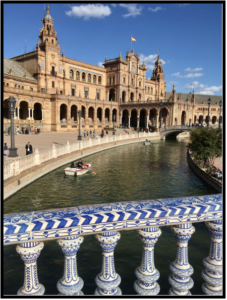
Profe Juan told me that usually buildings created for world fairs in other countries get destroyed, but the architect did such an impressive job with the Plaza that the city had to keep it; yet another example of Spain’s tradition of preserving beauty.
During our visit to the Plaza, I got the honor of rowing Profe (& perrito Mambo) around the surrounding river in a small row boat, a personal highlight of my trip so far.
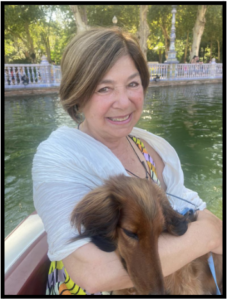
Before coming to the city, Sevilla already had an important place in my heart. When my sister was in college, she studied abroad at the Universidad de Sevilla, which became one of the most fulfilling and special times in her life. Being able to finally see the city that she (constantly) talks about, was a blessing. I am forever grateful to have had the chance to share just some of those similar experiences with her.
After this trip, I think I may have to petition the study abroad office for the creation of a future May-Mester program based in Sevilla.


